25+ Sample Classroom Cleaning Checklist
-
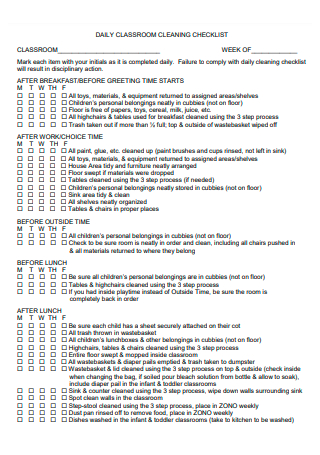
Daily Classroom Cleaning Checklist
download now -
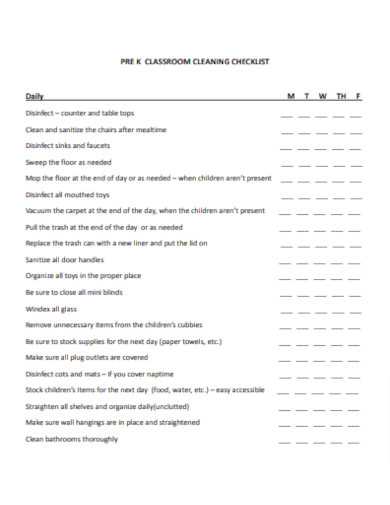
Simple Classroom Cleaning Checklist
download now -
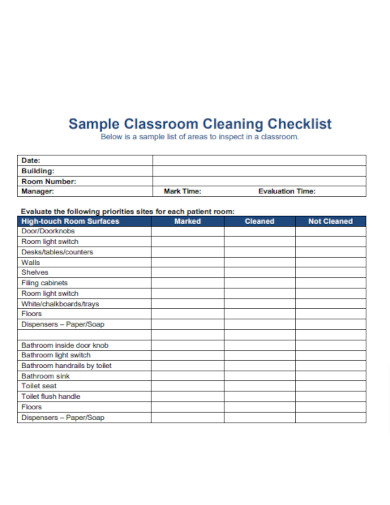
Classroom Cleaning Evaluation Checklist
download now -

School Classroom Cleaning Checklist
download now -
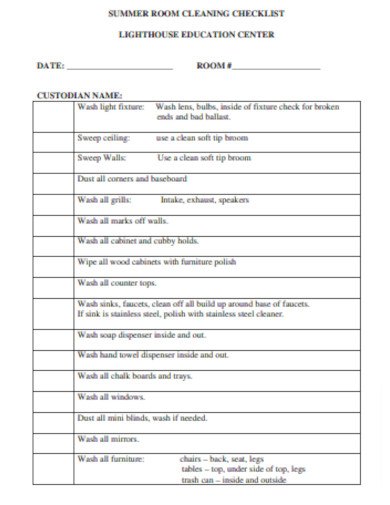
Sample Classroom Cleaning Checklist
download now -

Classroom Cleaning Weekly Checklist
download now -
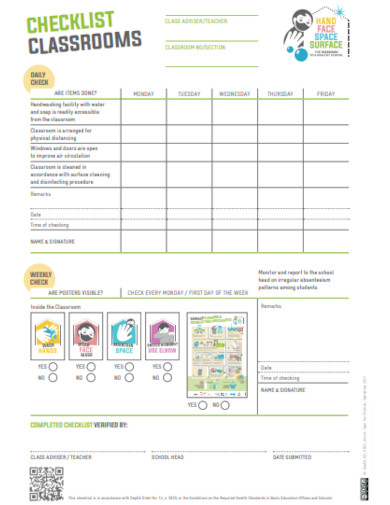
Blank Classroom Cleaning Checklist
download now -
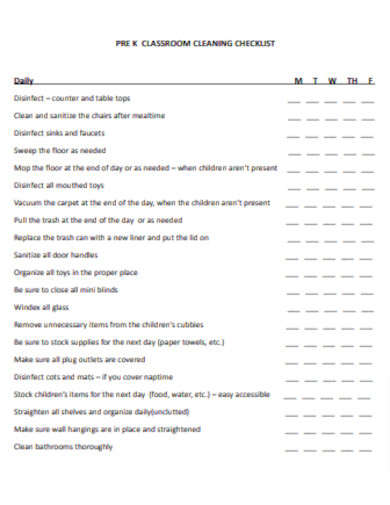
Preschool Classroom Cleaning Checklist
download now -
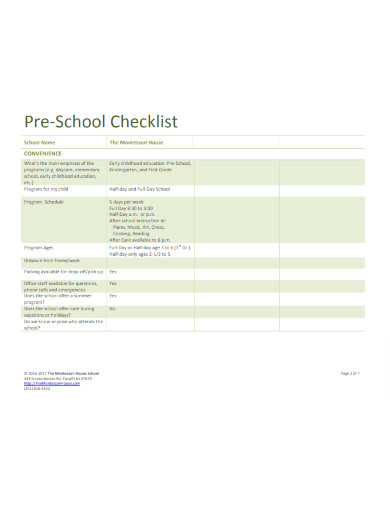
Classroom Cleaning Daycare Checklist
download now -
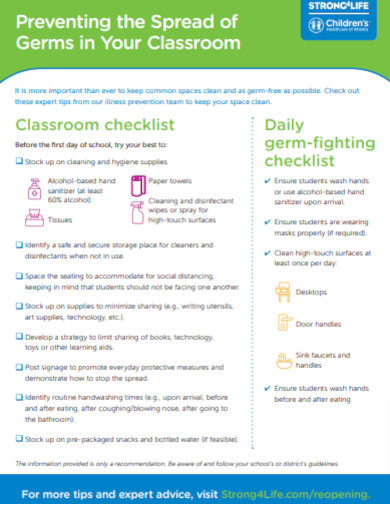
Printable Classroom Cleaning Checklist
download now -
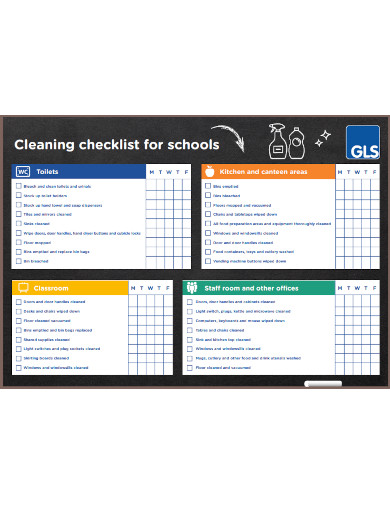
Basic Classroom Cleaning Checklist
download now -
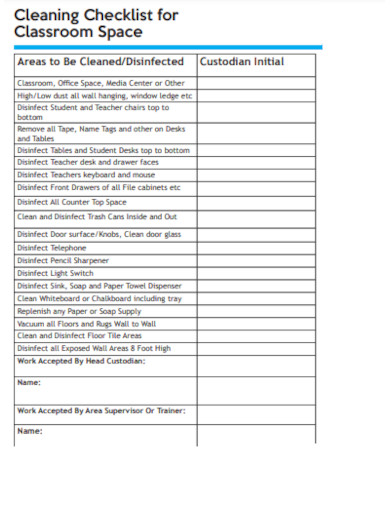
Classroom Space Cleaning Checklist
download now -
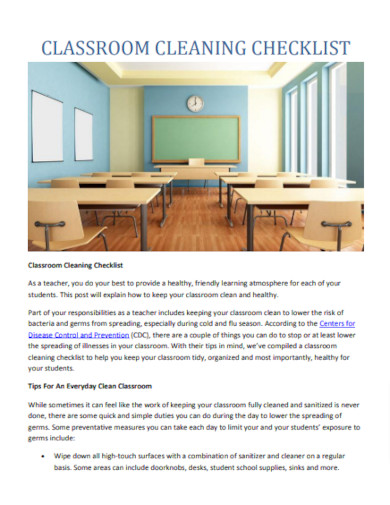
Classroom Daily Cleaning Checklist
download now -
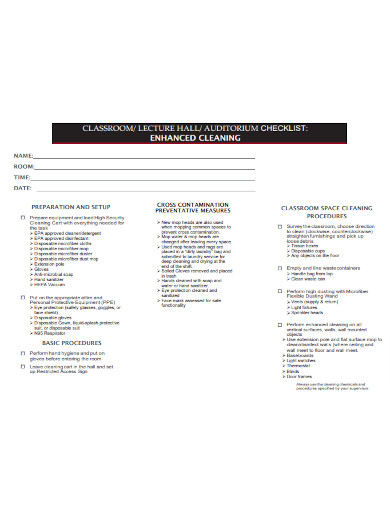
Editable Classroom Cleaning Checklist
download now -
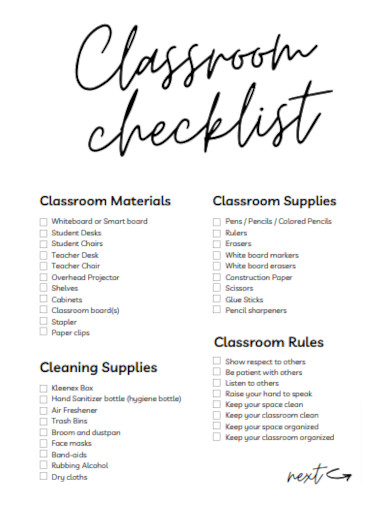
Standard Classroom Cleaning Checklist
download now -
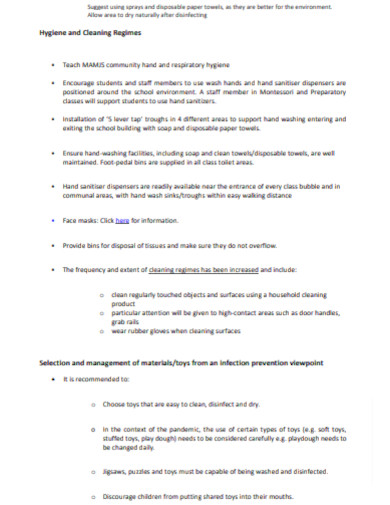
Classroom Deep Cleaning Checklist
download now -
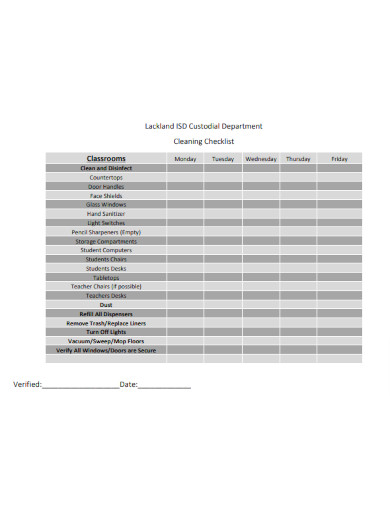
Classroom Weekly Cleaning Checklist
download now -
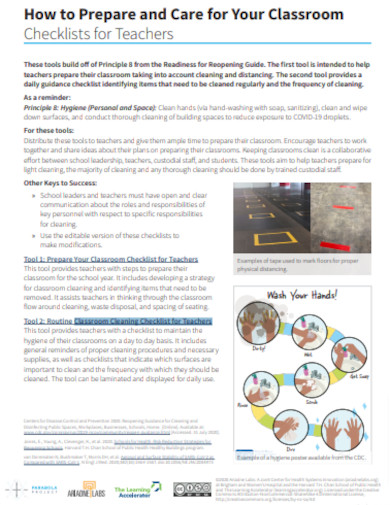
Classroom Cleaning Checklist for Teachers
download now -
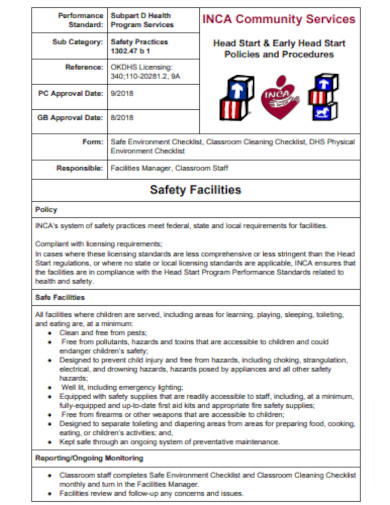
Classroom Cleaning Safe Checklist
download now -
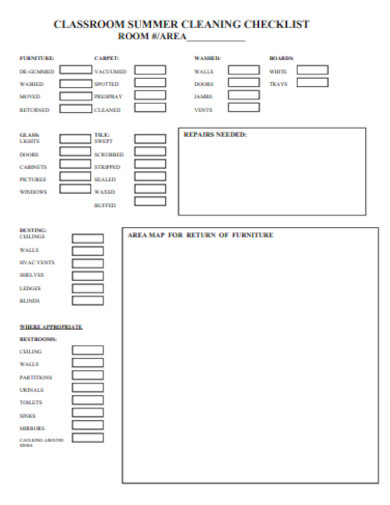
Classroom Summer Cleaning Checklist
download now -
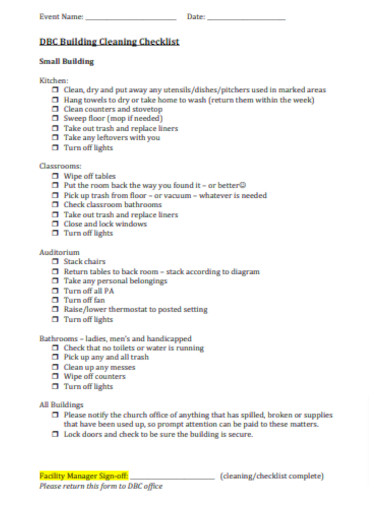
Classroom Building Cleaning Checklist
download now -
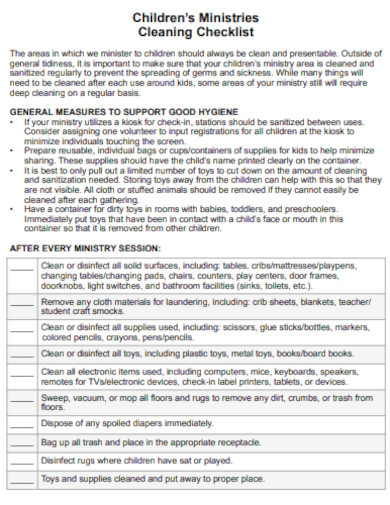
Childrens Classroom Cleaning Checklist
download now -
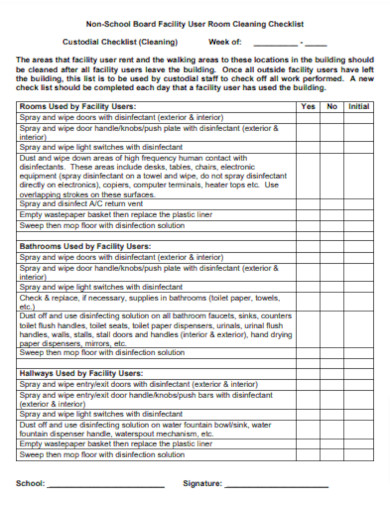
Classroom Cleaning Custodial Checklist
download now -
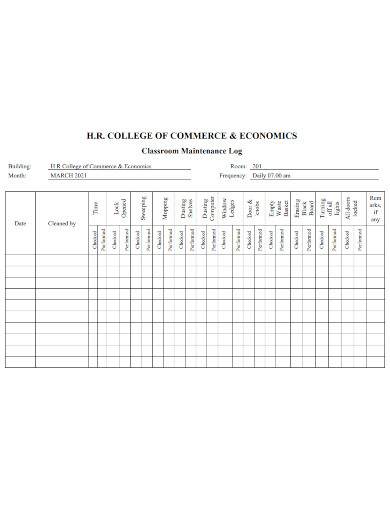
Classroom Cleaning Maintenance Checklist
download now -
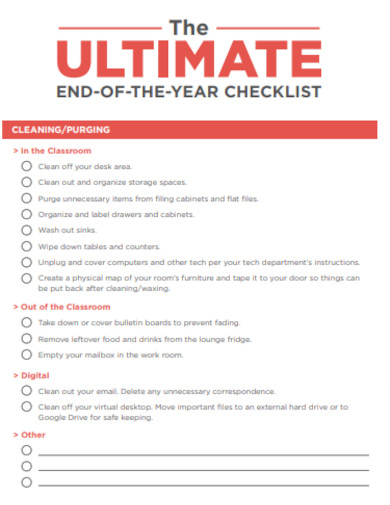
Classroom Cleaning Checklist Layout
download now -
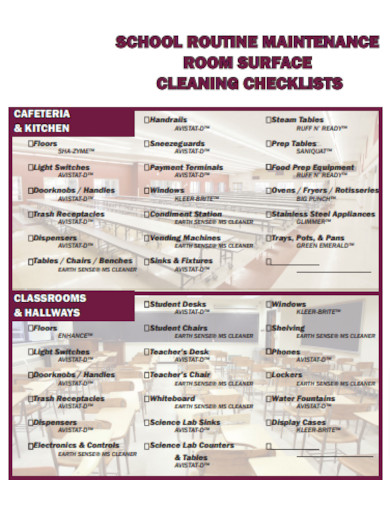
Classroom Cleaning Routine Checklist
download now
FREE Classroom Cleaning Checklist s to Download
25+ Sample Classroom Cleaning Checklist
Daily Cleaning Routines
Weekly Cleaning Tasks
Monthly Cleaning Strategies
Seasonal Cleaning Routines
Special Focus: COVID-19 Measures
Green Cleaning: Towards Sustainable Practices
FAQ’S
Can the checklist be used for classrooms of all grades?
Who should be responsible for executing the tasks on the checklist?
Should parents be informed about the classroom cleaning procedures?
What should be done if a task on the checklist is missed or overlooked?
How often should the classroom cleaning checklist be followed?
The educational landscape is multifaceted, with cleanliness playing an integral role in shaping a conducive learning environment. Not only does it offer aesthetic appeal, but a clean classroom is also pivotal for ensuring the health and safety of both educators and students.
Daily Cleaning Routines
Maintaining a classroom isn’t just about the significant overhaul; it’s the daily habits that count.
Dusting: Ensuring a breathable environment – Regular dusting prevents allergens and maintains air quality. Emphasize areas like shelves, projectors, and corners.
Sanitizing touchpoints: From doorknobs to desks – Touchpoints, the areas frequently touched, are hubs for germs. Daily sanitizing minimizes the risk of infections.
Floor maintenance: Sweeping and spot cleaning – Floors are quick to accumulate dirt. Regular sweeping ensures safety and cleanliness.
Weekly Cleaning Tasks
While daily cleaning handles immediate concerns, a weekly regimen addresses deeper issues.
Deep vacuuming: Beyond daily debris – Vacuuming lifts embedded dirt, maintaining the carpet’s integrity and appearance.
Wiping down all surfaces: Importance of disinfection – Weekly disinfection, using a robust antimicrobial solution, ensures a hygienic space.
Maintaining windows: Ensuring clarity and hygiene – Clear windows allow natural light and reduce reliance on artificial sources. Additionally, clean windows prevent mold buildup.
Monthly Cleaning Strategies
Over time, some areas necessitate intensive care.
Waxing floors: Prolonging life and aesthetics – Waxing gives floors a polished look while offering protection against wear.
Inspecting storage areas: Ensuring hygiene beyond the visible – Hidden zones, like cupboards, often harbor dust and pests. Regular checks and clean-ups are crucial.
Ventilation system check: A breath of fresh air – Ensuring vents and fans are clean ensures optimal air quality.
Seasonal Cleaning Routines
Each season brings unique challenges, necessitating tailored cleaning routines.
Preparing for winter: Germ prevention during flu season – Intensifying cleaning processes can help mitigate the spread of seasonal ailments.
Welcoming spring: Fresh starts post-winter months – Post-winter cleaning addresses issues like mold that might have surfaced during the colder months.
Readying for summer: The deep cleanse before vacations – An in-depth clean before summer ensures students return to a pristine environment.
Transitioning into autumn: Preparing for a new academic year – Autumn, the gateway to a new academic term, is the ideal time to refresh and reset the classroom.
Special Focus: COVID-19 Measures
The pandemic underscored the urgency for stringent cleaning protocols.
Sanitization versus cleaning: Understanding the difference – While cleaning removes dirt, sanitizing reduces pathogens. Both processes, while distinct, are essential in the COVID-era classroom.
The need for personal protective equipment (PPE) – PPE, like masks and gloves, are imperative to protect cleaning personnel.
Monitoring health: Encouraging a culture of self-reporting – Promoting an environment where students and educators report health anomalies aids proactive measures.
Green Cleaning: Towards Sustainable Practices
Embracing eco-friendly practices benefits everyone.
Selecting eco-friendly products – Green products, devoid of harmful chemicals, are safer for users and the environment.
The benefits of green cleaning: For health and the environment – Eco-friendly practices minimize toxic exposure and reduce environmental harm.
Training educators on sustainable cleaning methodologies – Informing educators about green products and practices enhances overall cleaning effectiveness.
FAQ’S
Can the checklist be used for classrooms of all grades?
While the core elements of the checklist can apply to all grades, specific needs may differ. For instance, a science lab in a high school might require additional cleaning protocols compared to a primary grade classroom. Customization based on grade and classroom function is advised.
Who should be responsible for executing the tasks on the checklist?
While custodial staff typically handle cleaning duties, fostering a culture where students and educators take shared responsibility can be beneficial. Simple tasks, like ensuring trash is correctly disposed of, can be shared among students, promoting accountability.
Should parents be informed about the classroom cleaning procedures?
Transparent communication with parents regarding cleaning practices helps in building trust. Sharing the cleaning checklist and any updates, especially during health crises like the COVID-19 pandemic, keeps parents informed and reassured.
What should be done if a task on the checklist is missed or overlooked?
It’s crucial to address any overlooked tasks promptly to ensure the classroom remains a safe environment. Regular maintenance audits or reviews of the checklist can also help in identifying recurring issues and addressing them systematically.
How often should the classroom cleaning checklist be followed?
While certain tasks on the checklist should be conducted daily checklist(like dusting and sanitizing high-touch surfaces), other tasks might be weekly or monthly. It’s essential to customize the checklist according to the specific needs of the classroom and the institution’s guidelines.
In conclusion, a clean classroom is the cornerstone of an efficient learning environment. While immediate concerns are addressed through daily routines, a strategic approach to cleaning—considering seasonal needs, pandemic precautions, and sustainability—ensures longevity and health in the educational realm. Continuous adaptation and evolution of cleaning practices are imperative as we navigate the ever-evolving dynamics of the modern classroom.
